Rane FME 15 Handleiding
Rane
Niet gecategoriseerd
FME 15
Bekijk gratis de handleiding van Rane FME 15 (4 pagina’s), behorend tot de categorie Niet gecategoriseerd. Deze gids werd als nuttig beoordeeld door 11 mensen en kreeg gemiddeld 4.9 sterren uit 6 reviews. Heb je een vraag over Rane FME 15 of wil je andere gebruikers van dit product iets vragen? Stel een vraag
Pagina 1/4

OPERATING / SERVICE MANUAL FME 15
EQUALIZER
QUICK START
For many of you, reading an owner’s manual is about as insulting as using training wheels
on your first two-wheeler. We therefore offer the following Quick Start section which outlines
the basics of the FME 15 so briefly it counts only as familiarization material, not training.
Using the FME 15 in an insert loop of a mixer is extremely easy. Simply connect them
together using a single stereo cable (¼" TRS) between the mixer’s insert loop and the FME
15’s PATCH I/O jack. This jack is wired for the tip=send, ring=return convention used by
mixer manufacturers.
Anyone familiar with other graphic equalizers will find this one just as familiar. One word
of caution: the boost/cut RANGE switch drastically changes the impact of a given filter. Be
careful.
Set the IN and OUT GAIN controls to the same physical positions for unity gain through
the equalizer. That is, moving both slider handles together (keeping them aligned) always
maintains overall unity gain from input to output. Many strange gain structure conditions may
be handled with these controls. See the Operating Instructions on the back page for more
information. Most applications require only a few dB of boost or cut. Start with the RANGE
switch in the ±6dB position, and increase to ±12dB only if necessary. Setting curves is as easy
as it is on all Rane graphics thanks to our unique interpolating constant-Q circuitry. For more
information on setting up your curves correctly, again, see the back page.
NEVER CONNECT ANYTHING EXCEPT AN APPROVED RANE POWER SUP-
PLY TO THE RED THING THAT LOOKS LIKE A TELEPHONE JACK ON THE
REAR OF THE FME 15. This is an AC input and requires special attention if you do not have
an operational power supply EXACTLY like the one that was originally packed with your unit.
See the full explanation of the power supply requirements elsewhere in this manual.
SYSTEM CONNECTION
When first connecting the FME 15 to other components,
leave the power supply for last. This gives you a chance to
make mistakes and correct them without damaging your
fragile speakers, ears and nerves.
INPUTS. All three Inputs are wired in parallel and are
actively balanced (all Flex modules feature true instrumenta-
tion amplifier balanced inputs). Each works equally well.
Choose strictly from a favorite hardware point-of-view, there
will be no performance trade-offs. The wiring convention
adheres to American, British and International standards of
pin 2, “+”, or tip being hot; pin 3, “–”, or ring being return;
and pin 1, COMMON GND, or sleeve being signal ground.
Unbalanced operation involves using only pin 2, “+”, or tip as
signal; and pin 1, COMMON GND, or sleeve as ground. It is
not necessary to short any terminals or pins to any others. Due
to the true instrumentation nature of the inputs, there is no
gain reduction if pin 3, or “–”, is left open; however, if pin 3
gets shorted, it won’t hurt anything either. Use pin 1, the
shell, or the COMMON GND point on the terminal strip for
shield ground. (See Rane Note 110 for further information).
OUTPUTS. The FME 15’s Outputs mimic the Inputs.
True balanced output interconnection only requires the use of
pin 2, “+”, or tip; and pin 3, “–”, or ring for signal transmis-
sion. It does not require pin 1, or signal ground. All the signal
exists between the two balanced leads; ground is not in-
volved. Ground is used only for
shielding. If unbalanced output is
your preference, use pin 2, “+”, or
tip as signal; and pin 1, COMMON
GND, or sleeve as return. Leave
pin 3, “–”, or ring open. Again,
have a look at Rane Note 110 for
more detail.
EXPANDING. Expanding and/
or daisychaining the inputs and outputs normally uses the ¼"
jacks. Multiple parallel connectors allow using another output
to drive a second processor or amplifier without special
cabling.
PATCH I/O. The PATCH I/O (Input/Output) jack makes
connection to mixer effects loop insert points very simple.
Just connect a shielded stereo tip-ring-sleeve (TRS) cable
between the FME 15’s PATCH I/O jack and the TRS effects
loop insert on your console. (Your mixer must use the
tip=send, ring=return effects loop wiring convention.)
SIGNAL LEVELS. The FME 15 is designed for all line-
level signals. Signal levels from -10dBV to +4dBu or consid-
ered normal and within range (at least 16dB of headroom
exists above these levels). Do not directly connect micro-
phones into the FME 15. Use a mic preamp first.

FRONT PANEL DESCRIPTION
1. MASTER OVERLOAD INDICATOR. This red OL LED monitors the input,
output and all filter stages for excessive signal levels. It lights whenever these
levels exceed 4dB below clipping. Occasional flickering is normal; however, it
should not be allowed to light steadily.
2. OVERALL BYPASS SWITCH & INDICATOR. This pushbutton switch
activates the “hard-wire” bypass function. When pressed into the engaged
position (red BYPASS LED on), all three pins of the INPUT connectors are
directly connected to the same pins on the OUTPUT connectors (hard-wired).
Engaging this switch converts the FME 15 into a relatively expensive patch cord,
but one with pretty lights.
3. INPUT AND OUTPUT GAIN CONTROLS. These slide controls set the relative
IN and OUT gain structures. The range of each control is ±12dB; however, note
that they are labelled opposite to each other, i.e., the top of the IN control reads
+12dB while the top of the OUT controls reads -12dB. Configured this way,
whenever they are moved together to the same spots the overall gain through the
FME 15 stays at unity. Normally set these controls in their center detent positions.
4. FILTER LEVEL CONTROLS. These fifteen slide controls set the individual
levels of the interpolating constant-Q filters. Their range is selectable between
±6dB (use bottom or right-hand scale) and ±12dB (use top or left-hand scale). The
grounded center-detent design of these sliders ensures all filters are off when
positioned to their centers.
5. FILTER RANGE SWITCH. Sets the overall range of all sliders between ±6dB
and ±12dB.
6. POWER INDICATOR. This yellow LED lights any time remote power is
supplied from either a RS 1 or VC 18 single power supply or FRS 8 or RAP 10
multiple power supply (but not in the presence of Popes, Queens and Presidents as
one might well expect).

REAR PANEL DESCRIPTION
1. 3-pin INPUT Connector. Pin 2 is positive, pin 3 is negative and pin 1 is signal
ground. For unbalanced operation, use pin 2 as hot and pin 1 as return. Do not use
more than one of the INPUT connectors on the FME 15.
2. INPUT Expand Connector. This ¼" TRS connector parallels the 3-pin connector
described in item #1. Tip is positive, Ring is negative and Sleeve is signal ground.
3. Terminal Strip INPUT and OUTPUT. The “+”, “–”, and COMMON GND
terminals of the #6 terminal strip parallel the respective pins in the 3-pin and ¼"
connectors. Used for primary Inputs and Outputs or additional patch connections.
Use only one INPUT connector: they do not sum. You may use more than one
OUTPUT connector to split to other devices.
4. OUTPUT Connector. This ¼" TRS connector parallels the 3-pin connector
exposed in item #5 below. As before, Tip is hot, Ring is not and Sleeve is signal
ground.
5. 3-pin OUTPUT Connector. Pin 2 is positive, pin 3 is negative and pin 1 is signal
ground. For unbalanced operation, do not short any pins to any others. Active
balanced Outputs operated in the unbalanced mode use only pin 2 driving the line
and pin 1 acting as the return. Pin 3 should be left disconnected. Grounding pin 3
will not cause any damage nor will it impair the sound. It only creates extra work
for your audio electrons and is unnecessary. You may use more than one type of
OUTPUT connector simultaneously to drive multiple devices.
6. PATCH I/O Connector. This ¼" TRS jack provides an unbalanced I (Input) on
its tip and an unbalanced O (Output) on its ring. Designed for use with tip=send/
ring=return effect loop inserts found on many mixing consoles. This provides an
easy means for patching the FME 15 into effect loops as painlessly as possible,
using a single ¼" TRS stereo patch cable. CAUTION: USE EITHER THE PATCH
I/O OR ANY OF THE INPUT AND OUTPUT CONNECTORS—DO NOT USE
BOTH AT THE SAME TIME. THESE ARE NOT SUMMING INPUTS. ONLY
ONE AT A TIME MAY BE USED.
7. GROUND LIFT Switch. This switch provides the ability to separate chassis
ground and signal ground. Normally, this switch should be in the LIFT position. In
some circumstances, moving it to the opposite position eliminates stubborn hum
and buzz problems. We realize a scientific explanation would be helpful, unfortu-
nately science doesn’t have enough to do with it. If you are tempted to try moving
this switch with your power amplifiers turned on and up, don't be. always turn
your amplifier levels down before changing your grounds around and then bring
them up slowly. Put a speaker re-coner out of work today!
8. Chassis Ground Point. A 6-32 screw is used for chassis grounding purposes. See
the CHASSIS GROUNDING note on the last page for details.
9. Remote Power Supply Input. The unit is supplied from the factory with a Model
RS 1 Remote Power Supply suitable for connection to this input jack. The power
requirements of the unit call for an 18-24 volt AC center-tapped transformer only.
IT IS NOT A TELEPHONE JACK. NEVER USE A POWER SUPPLY WITH
YOUR UNIT OTHER THAN THE ONE SUPPLIED OR A REPLACEMENT
APPROVED BY RANE CORPORATION. Using any other type of supply may
damage the unit and void the warranty. Two years parts and labor is worth
safeguarding, don’t you think?
Product specificaties
| Merk: | Rane |
| Categorie: | Niet gecategoriseerd |
| Model: | FME 15 |
Heb je hulp nodig?
Als je hulp nodig hebt met Rane FME 15 stel dan hieronder een vraag en andere gebruikers zullen je antwoorden
Handleiding Niet gecategoriseerd Rane
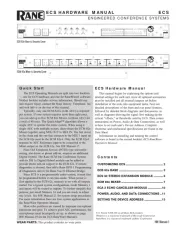
4 Juli 2025
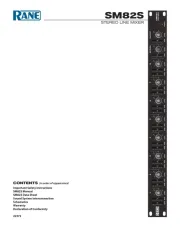
4 Juli 2025
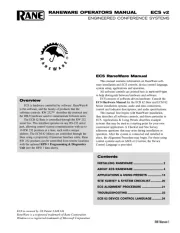
2 Juli 2025
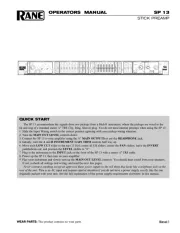
1 Juli 2025
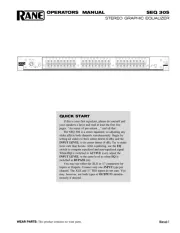
1 Juli 2025
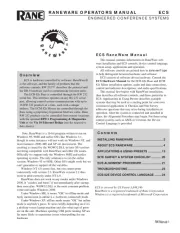
1 Juli 2025
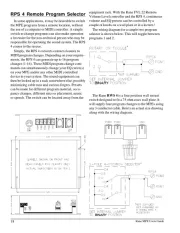
1 Juli 2025
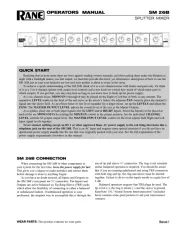
30 Juni 2025
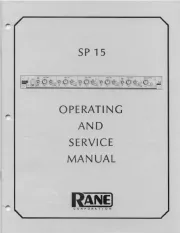
30 Juni 2025
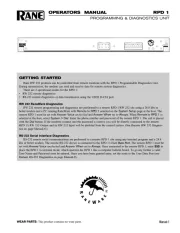
30 Juni 2025
Handleiding Niet gecategoriseerd
- Taqua
- Baby Cakes
- Axis
- Lifan
- DataComm
- RadonTec
- Thermex
- Daitsu
- Emtec
- Gewiss
- Berner
- Salewa
- CDA
- Gioteck
- Gator
Nieuwste handleidingen voor Niet gecategoriseerd
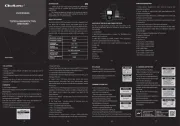
13 September 2025

13 September 2025

13 September 2025

13 September 2025
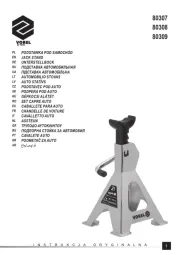
13 September 2025
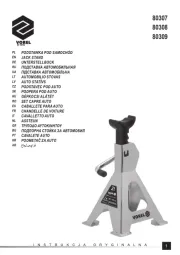
13 September 2025
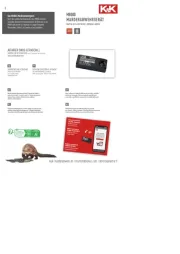
13 September 2025

13 September 2025

13 September 2025
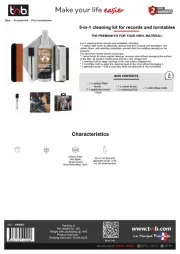
13 September 2025